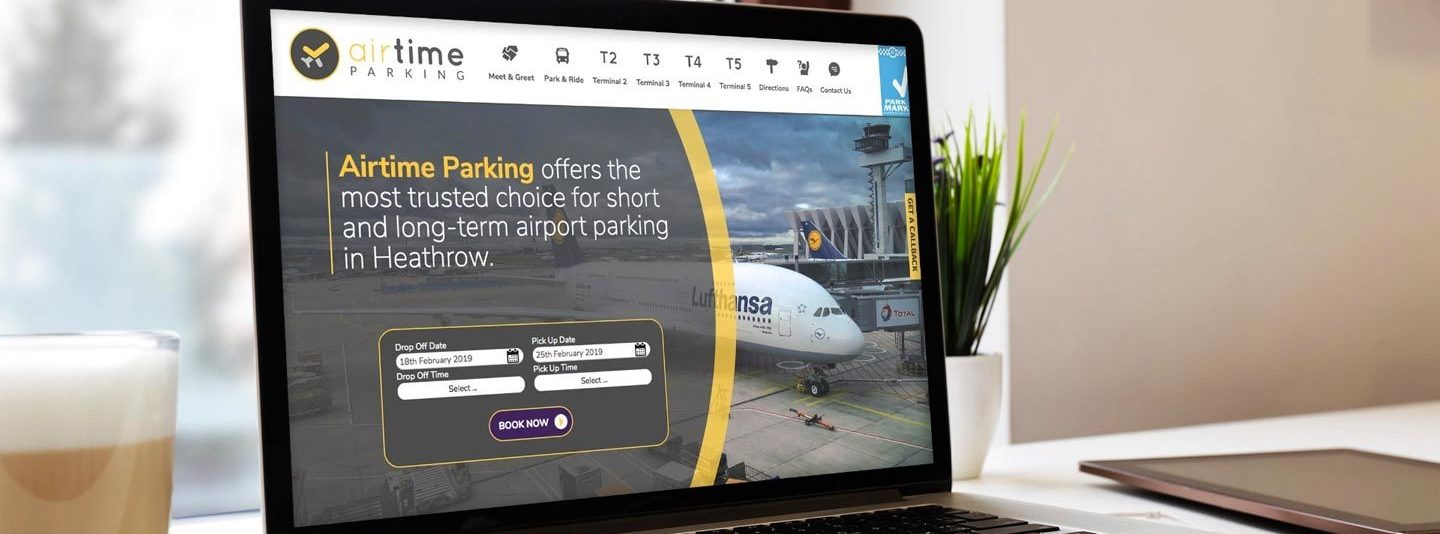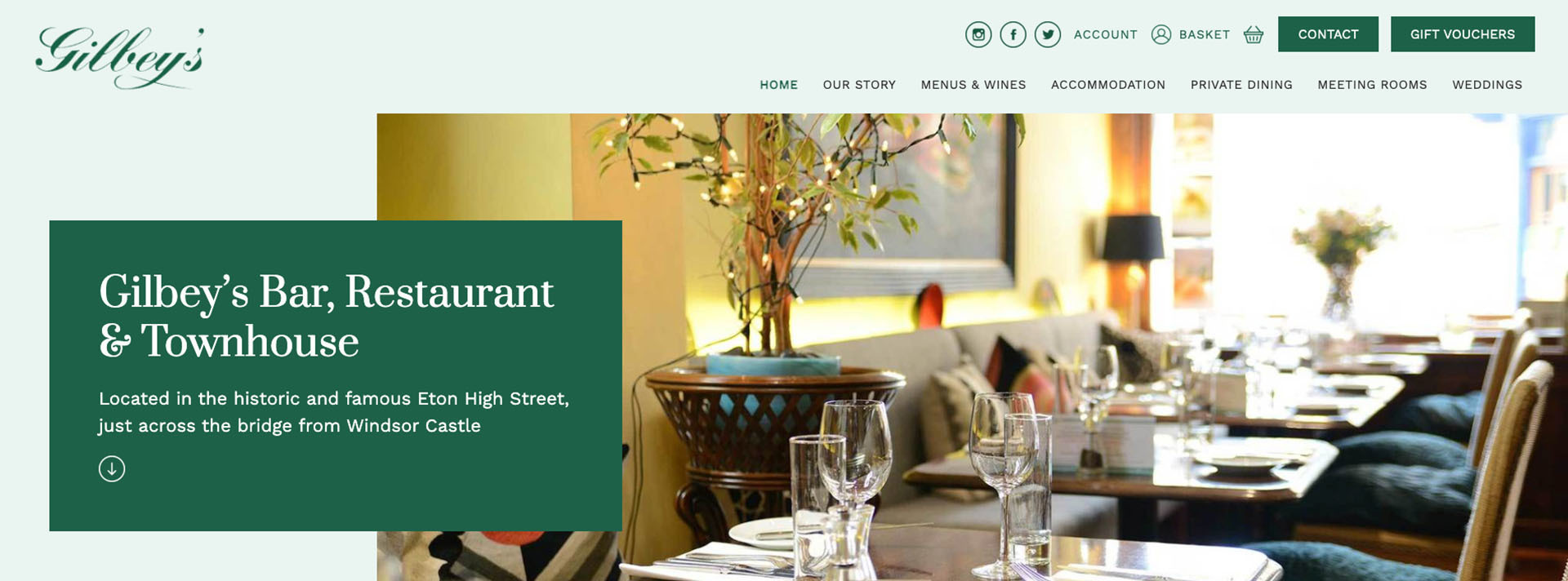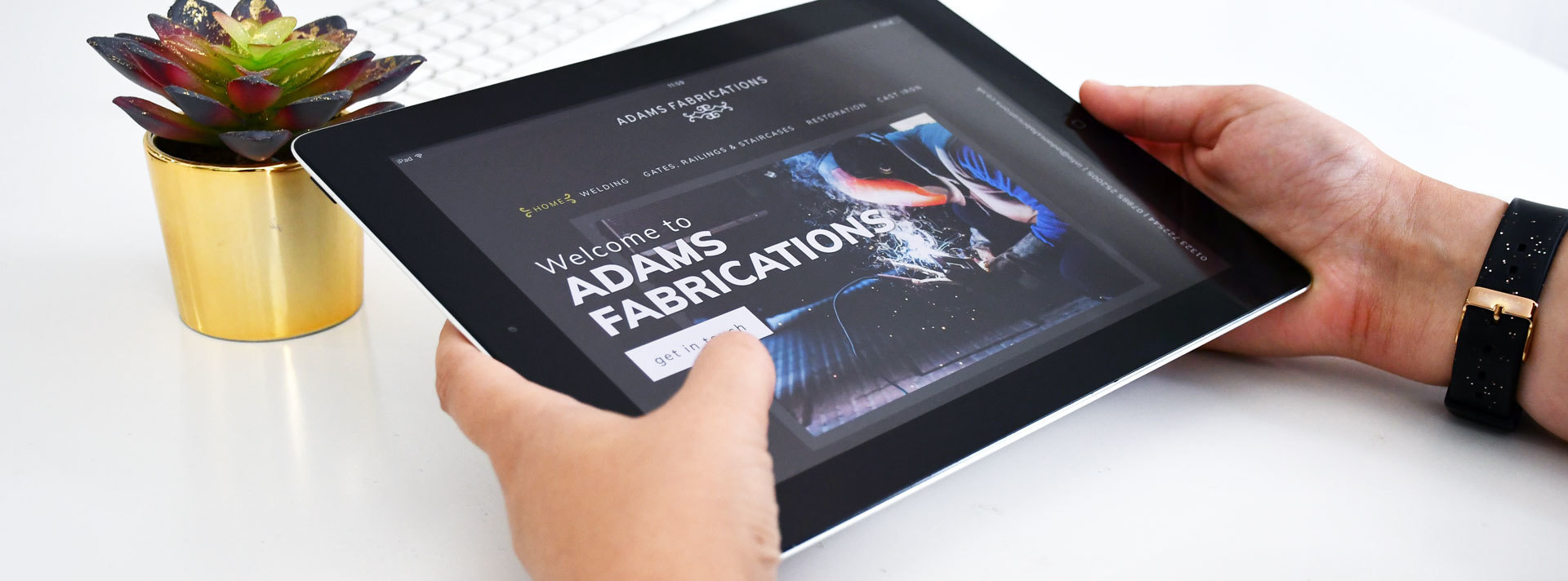10 Top Tips For Creating a Successful Website Homepage
Posted on 27th August 2023
The homepage of your website is the first impression visitors will have of your business. It serves as a preview of what you offer, and most visitors will decide within 3-5 seconds if they want to stay on your site or leave. Therefore, it’s important that you structure your homepage in a way that clearly communicates what you do and encourages customers to take action.
This article will explore the elements of a successful homepage and how to structure them to draw in visitors.
1. Keep your layout clean and easy to navigate

When it comes to web design, keeping your homepage’s layout clean and easy to navigate should be a top priority. A page that is too cluttered will be difficult for users to quickly identify the content they are looking for and can be overwhelming for them.
2. Have a clear navigation menu
Navigation menus are an essential part of any website, providing visitors with quick and easy access to the various pages and content within the site. Not only do navigation menus give users a way to explore your website at their own pace and convenience, but they also serve as a great way to quickly illustrate the structure of your site..
A well-crafted website navigation menu should be highly visible and easily understandable to any visitor, as this goes a long way in helping them find what they are looking for. Good web design makes sure that it is abundantly clear where each link on the menu leads to, so users feel safe exploring your site without fear of getting lost or stuck. When properly implemented into website design, a clear navigation menu equips all types of visitors with an efficient route through your site.
3. Have key information above the fold

The space on a webpage that is visible without scrolling is referred to as 'above the fold'. The best way to approach your homepage layout is to make sure that all essential content is placed above the fold so that it will receive maximum visibility.
This section should provide information about your company and what services you offer, as well as give visitors an idea of what to expect from the rest of the website.
4. Include your contact information
Having contact information on your website is an absolute must if you want your customers to be able to connect with you. Having this above the fold means that visitors can see it without needing to scroll down or click through multiple levels within the site.
Including a phone number and email address is the best approach as this ensures that customers will always be able to get in touch with enquiries, queries, or suggestions. Ideally, this should be placed on the main navigation bar at the top of the homepage, so it's easy to find.
You should also include your contact information in the footer of your website. As well as including your phone number and email address, adding your business address will provide your visitors with a sense of trust and legitimacy, as they will be able to see exactly where you are based.
5. Logo and branding elements
Your logo is an important part of your website's branding. It goes a long way towards making your site look professional and can instantly remind visitors of your brand when they see it in the future. The positioning of your logo is also important. The top left side of the homepage is a great spot for maximum visibility, but you can also centre it within other parts of the page such as the navigation bar or first section.
6. Create an eye-catching colour scheme

Choosing the right colour scheme for your website can be challenging. However, getting it right is extremely important in creating an effective design that appeals to visitors. An eye-catching colour scheme should be both creative and consistent across the entire website.
The key is to pick a few colours that match together harmoniously, as they will affect the overall look and feel of the site. Focus on two or three main colours, with accents from other complementary ones along the way. For elements like CTAs and menus you'll want to make sure to use colours that stand out and draw attention, such as brighter hues or bolder combinations to increase engagement from users.
7. Include effective introduction of your business
Every business needs an effective introduction to help new customers understand what it has to offer. On the homepage, businesses should focus on answering three key questions in just a few seconds: Who are you? What is your company, product, or service about? Why should I care and use it?
When introducing your company or product, it is essential to highlight its unique benefits and features. This can be done through eye-catching visuals, concise messaging, and clear calls-to-action. Additionally, focusing on the customer's pain points while tailoring the content for each target audience, can help show how your product or service solves their problem in a unique way.
Taking the time to create high-quality content for your homepage will pay dividends in terms of customer retention and trust. An effective introduction helps set the tone for the rest of the visitor’s journey by providing visitors with a focused understanding of who you are and what you do, within seconds of landing on the page.
8. Use calls to Action (CTAs)

A call to action (CTA) is one of the most important components of any website. CTAs are typically phrases such as 'Sign up now!', 'Join today', 'Get started with a free trial', or 'Subscribe now' that grab the attention of potential customers and direct them towards engaging more deeply with your company.
The key to creating an effective CTA lies in conveying the benefits of taking specific action. Your choice of words should be brief yet persuasive, and it makes sense to use contrasting colours so that it stands out from your other page elements. You may also add urgency and encourage a speedy response through appropriate phrases that push visitors towards taking the desired action - such as 'Click now' or 'Subscribe today'. All these steps culminate into a compelling message that drives people to take action.
9. Include high resolution images
Photos are one of the most powerful components of web design, as they make it possible to capture the attention of website visitors and evoke positive emotions. When designing your homepage, it is important to use high resolution images that will create a lasting impression.
While stock images can be a great resource, it is important to also include images that are unique to your business and your products or services.
You can also use visuals such as videos, GIFs, or illustrations to engage visitors and make them more likely to stick around for longer.
10. Update content frequently
Regularly updating the content on your website is perhaps the most important way to keep visitors engaged. A website with regularly updated content shows readers that it is current, relevant, and dependable, which can go a long way in establishing your credibility.
When creating content for your website, be sure to make it relevant and informative without going into too much detail. The homepage should provide an overview of the topic or services you offer without superfluous information that will quickly bore readers. You can delve further into topics on other pages while providing links from the homepage for ease of reference. Finally, proofread each piece to ensure accuracy before publishing – mistakes do happen but taking care in drafting well-written content goes a long way in solidifying viewer loyalty!
Bonus tip - make sure your website is fully responsive
Although not a tip about your home page layout, it is important to note that your website should be fully responsive.
A fully responsive website is one that automatically adjusts to the size of the screen it is being viewed on. With more consumers spending time on their mobile phones than ever before, it’s essential that websites are designed to be optimised for viewing and use on all devices. Without an effective mobile-responsive site, businesses risk losing out on potential customers and jeopardising search engine rankings that help draw in organic traffic.
Conclusion
Creating a successful homepage is critical for the success of any website. From keeping the layout clean and easy to navigate, and including prominent contact information to using calls to action, there are several key elements to consider when structuring your homepage. Additionally, regularly updating content helps keep visitors coming back while providing them with fresh and relevant resources.
Following these tips can help ensure that your website homepage is attractive, informative, and user-friendly, allowing you to maximise your online presence and reap the rewards of increased customer engagement!

If you would like help creating up a new, affordable website, please get in touch. it’seeze Windsor is a specialist website design company that offers businesses affordable website packages and ongoing expert support. Our high-quality, professional web design services are ideal for start-ups and small businesses in Windsor. Not sure if your existing website is working for you? We also offer a free Website Health Check that highlights the areas where improvements can be made. Call us today to create the website of your dreams and turn your business into a success.
Tagged as: Online Marketing, web design
Share this post:



